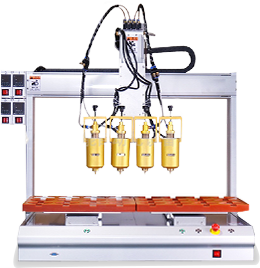

Industrial metal structural parts stamping parts are the core basic components of modern industrial manufacturing. They use presses as power sources and rely on high-precision molds to apply external forces to metal plates, strips, pipes and profiles, and accurately shape parts that meet complex industrial needs through plastic deformation or separation processes. Its manufacturing process combines mechanical principles with precision design, just like carving metal materials into "functional works of art" in the industrial field.
2. Product Features
Features Dimensions | Core advantages | Practical application value |
Material utilization | Through optimization of layout and mold design, the material utilization rate can reach up to 85% or more | Greatly reduce the cost of raw materials and reduce resource waste |
Lightweight and high strength | Under the same strength, the weight is 30% - 40% lighter than traditional castings | In the automotive field, effectively reduce energy consumption and carbon emissions |
Dimensional accuracy | Tolerance control can reach ±0.05mm, and the consistency of products with the same mold is high | Meet the needs of automated assembly and reduce secondary processing |
Surface quality | Surface roughness Ra value ≤3.2μm, no obvious scratches or burrs | Reduce surface treatment processes and improve product aesthetics and corrosion resistance |
In addition, stamping parts have extremely high production efficiency. A single device can produce dozens of products per minute, and the mold has a long service life, which effectively reduces the production cost of a single piece and has significant advantages in scale production.
3. Product Details
(I) Processing Technology
Stamping processing covers two core processes: separation and forming. The separation process includes blanking, punching, cutting, etc. The metal material is separated through precise shearing of the mold edge to provide blanks for the forming process; the forming process gives the blank the required shape through bending, drawing, flanging, bulging and other processes. For example, the complex curved surface of the car fender is a typical result of the drawing process. Combining CNC technology and automation equipment, high-precision and high-efficiency continuous production can be achieved.
(II) Applicable materials
1. Steel plate: Hot-rolled steel plate is suitable for large structural parts, such as chassis parts of engineering machinery; cold-rolled steel plate is used to manufacture automotive interior parts, electrical housings and other products with high requirements for precision and surface quality.
2. Stainless steel plate: Due to its excellent corrosion resistance, it is widely used in medical equipment, food machinery, kitchen and bathroom equipment and other fields.
3. Aluminum plate: With its light weight, high strength and good thermal conductivity, it has become the preferred material for aerospace, new energy vehicle battery trays, and electronic product heat dissipation components.
(III) Quality inspection
Establish a full-process quality control system: Appearance inspection uses AI visual inspection equipment to quickly identify micron-level defects; size inspection uses a three-coordinate measuring instrument to ensure that key dimensions are accurate; performance inspection uses universal material testing machines, hardness testers and other equipment to strictly test tensile strength, yield strength, hardness and other indicators to ensure stable and reliable product quality and meet the stringent requirements of various industrial scenarios.
 Headquarters tel.
Headquarters tel. E-mail.
E-mail.